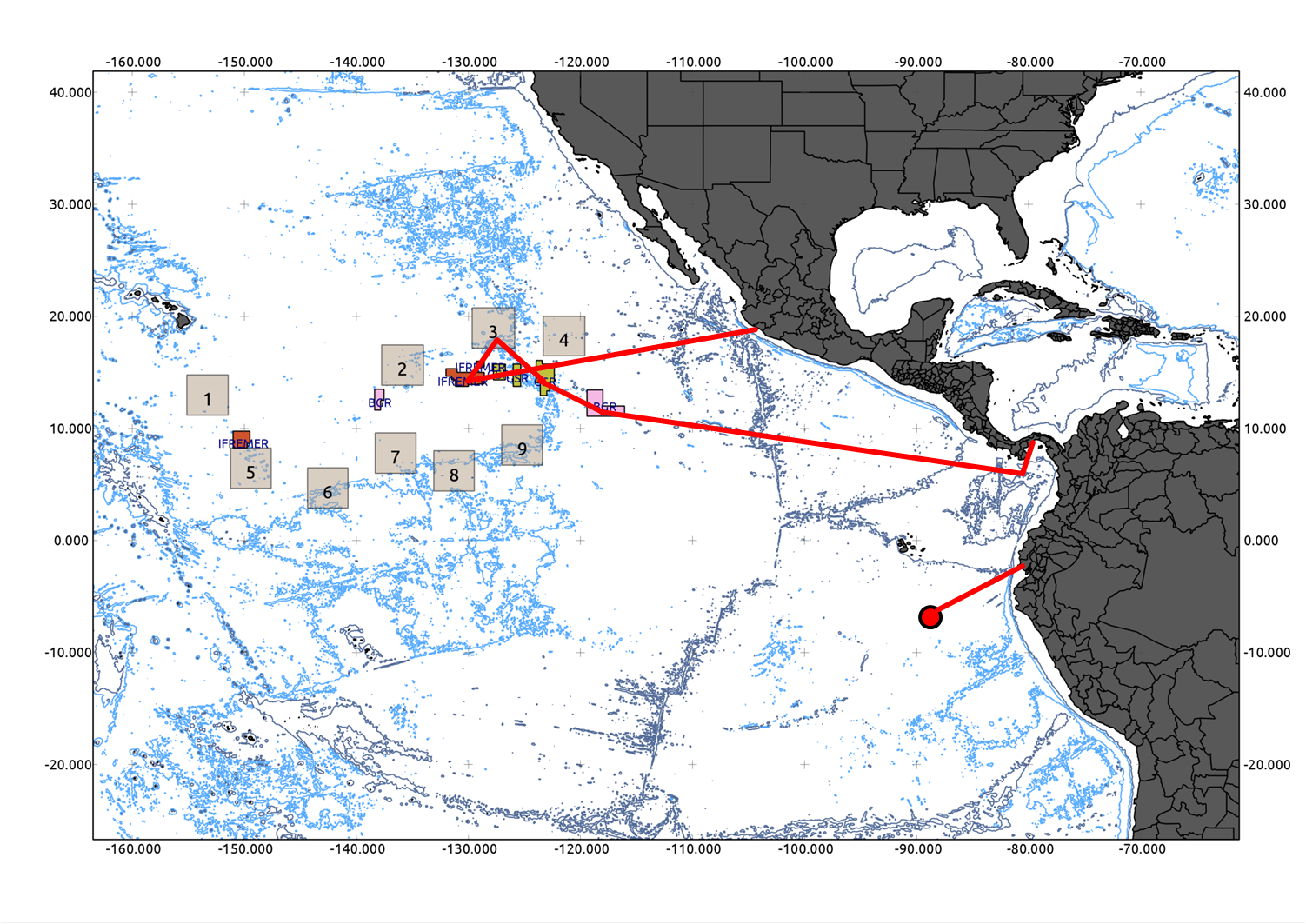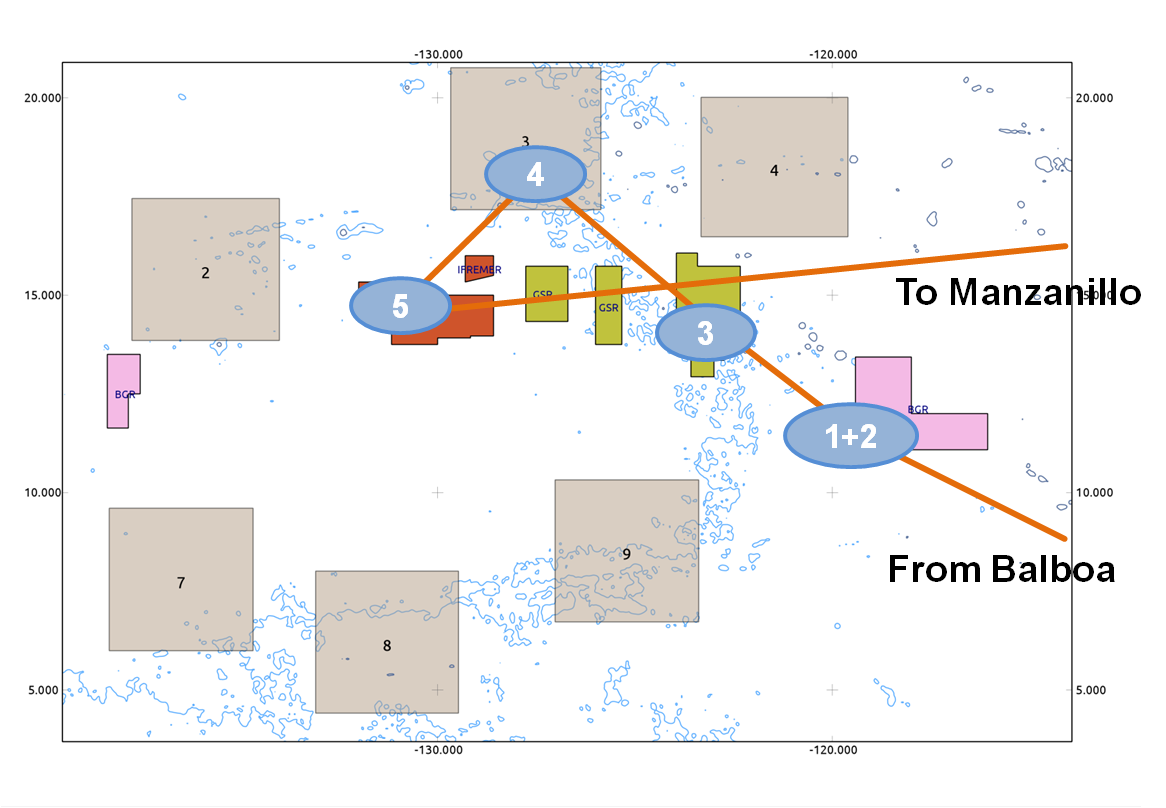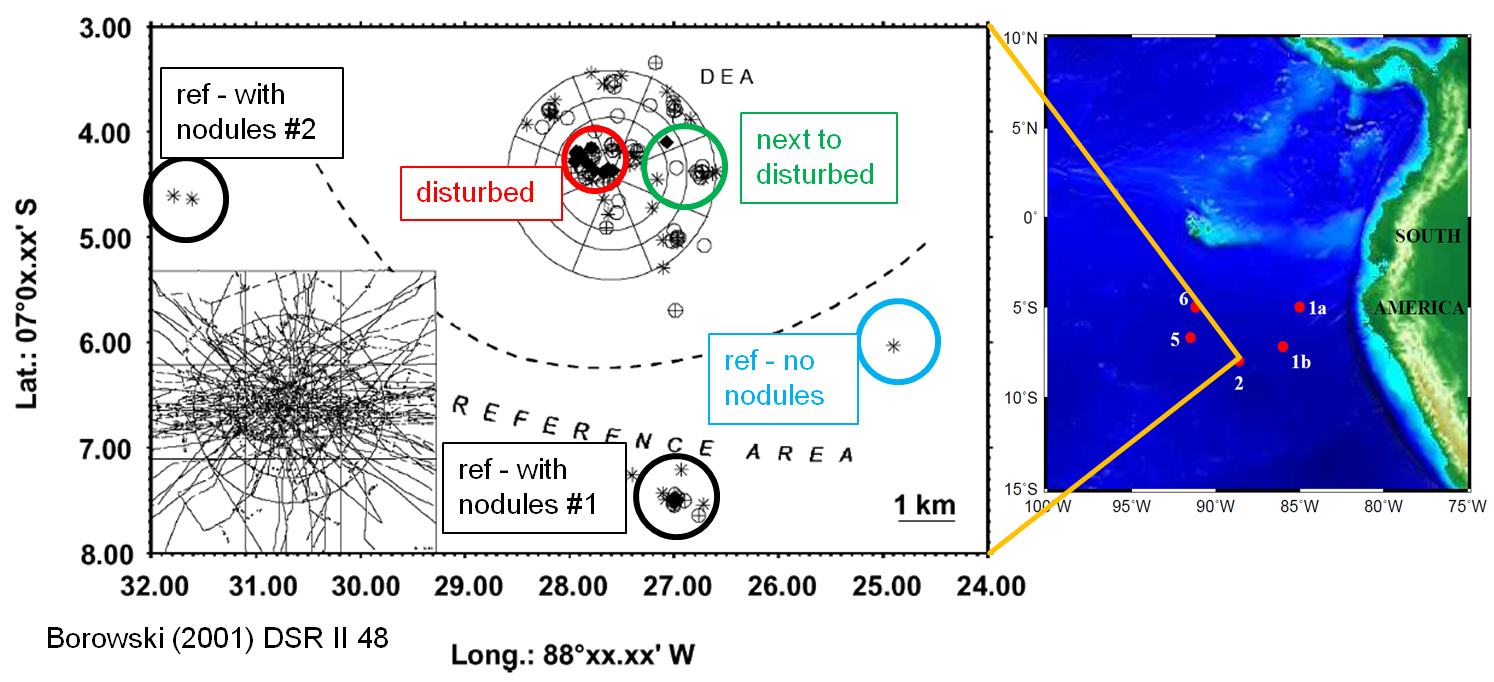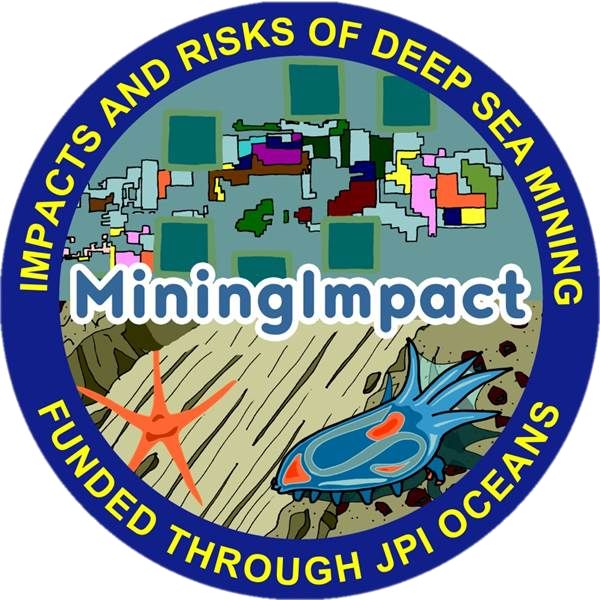JPI Oceans Ecological Aspects of Deep Sea Mining Cruises
| Cruise Number | Duration | Destination | Chief Scientist |
|---|---|---|---|
| SO239 | 10 March - 30 April 2015 | CCZ | Pedro Martinez |
| SO242-1 | 28 July - 25 August 2015 | DISCOL (Peru Basin) | Jens Greinert |
| SO242-2 | 28 August - 1 October 2015 | DISCOL (Peru Basin) | Antje Boetius |

RV SONNE Cruise - SO239

Duration: 52 days, March 10 - April 30 2015
An international group of 40 scientists and technicians from Belgium, France, Germany, Poland Portugal, and Romania is on board and supported by equipment from Netherlands to endeavor in this exciting but also challenging research cruise.
Objectives:
Aim of this 52 day long cruise to the Mn-nodule belt in the Clarion-Clipperton Zone (CCZ) in the equatorial Pacific is:
to study biological communities at and in the seafloor, monitor physical and chemical conditions up to 400m high into the water column above the 4.5km deep seafloor, and perform geochemical investigations in the sediment. All this is done to allow a better and scientifically sound assessment of the possible impact of Mn-nodule mining in this deep-sea environment. The cruise will work in the German, Belgian, and French License areas. It will also investigate a previous disturbance experiment in the License area of InterOceanMetal (IOM) and France and for the first time will do studies in area 3 of the Areas of Particular Environmental Interest (APEI).
Technology used during the cruise:
During SO239 a large variety of state-of-the art equipment will be used.
Well established techniques will be used to recover sediment in gravity cores (GC) and TV-guided multi corer (TV-MUC) deployments. The same multi corer will also sample sediment for meiofauna assessments in the top sediments of the seafloor.
An Epi-benthos sled (EBS) will sample benthos at the sediment surface along a transect of ca. 1 km. Baited traps will be deployed for several days to attract amphipods and other scavenging and mobile species.
The ROV Kiel 6000 will be used to visually survey the Mn-nodule covered seafloor and also sea mounts that often occur in the CCZ. It will also be used for collecting animals, take sediment samples with its push-core system and perform insitu experiments for testing the ‘crushability' of Mn-nodules in the deep sea.
For getting a detailed view of the seafloor on large special scale, AUV Abyss will hydroacoustically and visually map the seafloor during several dives.
RV SONNE Cruise - SO242-1 and SO242-2
Duration: 29 days (July 28 - August 25 2015) and 35 days (August 28- October 1 2015)
In the 70s and 80s the idea of using Mn-nodules as a metal resource created commercial but also scientific interest in the deep sea ecosystem. Inter alia the scientific and industrial cumminity was interested in the question, how commercial mining might impact this unknown realm?
Scientist in Germany thought about a strategy to investigate how to simulate such an impact to see how quickly the deep sea environment might recover from the disturbance. To investigate this, they choose an area 7° south of the equator offshore Peru to perform a larger scale disturbance experiment. Subsequently, they monitored the decolonization of the seafloor over 7 years. The experiment itself happened in 1989, with the last investigation in 1996 during SO106. Now, 26 years later (during SO242 with the ‘New' SONNE) the same area will be investigated with much more sophisticated technology than was available before.
The international team will consist of scientists and technicians from Belgium, Germany, Portugal, Netherlands, Norway and the United Kingdom.

Objectives:
Habitat characteristics: Detailed investigations of sampling / measurement / experimentation sites;Large scale mapping performed during leg 1 Benthic and hyperbenthic community characteristics: Focus on small size classes (micro‐, meiofauna) and megafauna; Macrofauna addressed at leg 1 (Bio‐) geochemical processes and rates: Focus on upper sediment layer and in situ measurements; sampling of deeper sediment layers at leg 1 Benthic foodwebs & energy transfer: Fate of fresh organic matter (remineralization, incorporation, transfer) Bioaccumulation and Ecotoxicology: Incorporation of contaminants, physiological/ molecular responses
Technology used during the cruise:
Leg 1 aims for very detailed acoustic and visual mapping, using the AUV Abyss. Sediment samples will be taken with TV-MUC and GC, to investigate the geochemical differences and long term changes between disturbed and undisturbed area and the comparison of the new findings with previous data.
Biological sampling with the TV-guided multi-corer (TV-MUC), box corer and EBS as well as detailed image analyses of the living fauna will be used to compare the ‘state of the environment' and the recovery compared to the findings 26 years ago.
During Leg-2, the ROV will be the main working equipment for highly targeted sampling and in-situ experiment at the seafloor. The international team will consist of scientists and technicians from Belgium, Germany, Portugal, Netherlands, Norway and the United Kingdom.

